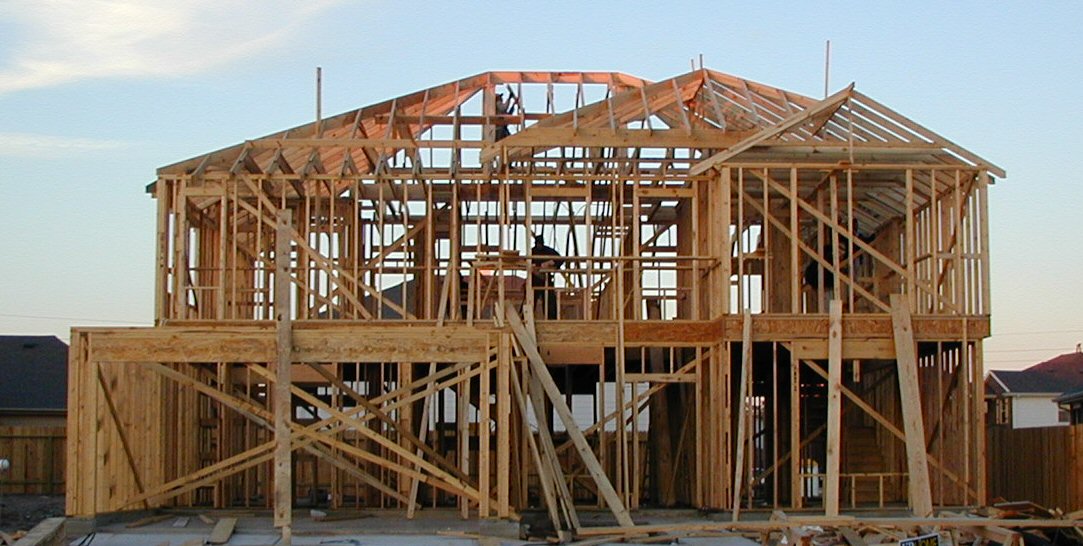| You Don't Need A "Craftsman" To Frame Your House |
|
I live in Asheville, North Carolina - an amazing city nestled in the heart of the eastern range of the southern Appalachian But let's get back to that "crafts and craft-persons" notation. Traditionally people living "off the beaten path" - as for centuries the southern Appalachian mountains certainly were (at least as far as persons of non-native American descendancy are concerned) - have had to largely fend for themselves, carving homes out of the very nature that they would live and die in. And they would create amazing furniture and utensils that would impress the craftsman of Europe for their ingenious functionality, if not for their elegant design. From these useful traditions would spring many modern day crafts people who continue to make a living (or at least try to) building beautiful furniture and elegant crafts pieces for the home in and around Asheville, NC. So what does all this have to do with your house or Eco-Panels as the provider of your "building envelope"? First off lets remember from previous postings that the "art" of most modern stick-frame construction methods that most homes are still built with today were pioneered (no pun intended) in the mid-west in the 1830s. These wood working skills would flow readily from the hands of craft persons already adept at the fashioning of log homes or furniture from the trees of the land, and as economies have evolved many home builders have naturally arisen from long family traditions of working with wood. But I would argue that we not be impressed by the "art" of stick framing a home, for it is far more important that this home provide a safe, strong, healthy and energy efficient structure for a family to reside. Let the crafts people do the pretty trim work for the home - the crown moulding, the post and beam vaulted ceiling, the cabinetry. These can certain make a home feel "warm and inviting". The stick framing is there for one reason only - not to showcase a person's art - but to provide structure for walls and the roof overhead. Don't forget it. And it is the thermal bridging of this stick framing - where the frame structure accounts for approx 25-27% of the building envelope Leave the building envelope - the outer shell of your home - to the experts at Eco-Panels. Tell your builder that they can still frame the interior walls traditionally, and yes you sincerely appreciate their fine craftsmanship where you can see it in the final touches of the trim carpenter. But lets not confuse stick framing with any sort of art - it is far more serious than that. |
 mountains - sometimes known as the "Paris of the South" for its sidewalk dining and a strong love of the arts, local crafts and craft-persons, food and beverage. More recently it has been known as "Beer City USA" for its high concentration of micro-breweries.
mountains - sometimes known as the "Paris of the South" for its sidewalk dining and a strong love of the arts, local crafts and craft-persons, food and beverage. More recently it has been known as "Beer City USA" for its high concentration of micro-breweries. and allows through the wood frame the almost free flow of energy from the inside of the home to the outside (or vice versa) - that makes this one of the LEAST ENERGY EFFICIENT methods of construction allowed by law (when you also consider the strength of the structure we can accurately say that it is the WEAKEST and LEAST ENERGY EFFICIENT method of construction allowed by law). Wood has an R value of approx 1 per inch, and when 25-27% of your house (according to USDOE) is approx R4, and you have another 20-40% of a wall system that is windows & doors that are in the range of R3 to R4 ("R" measures thermal resistance, and a low number is BAD) - all of a sudden you have 50 to almost 70% of the walls of a home that has an insulation value of R3 to R4. Pulling from such a low baseline it almost doesn't matter what you insulate with inside of the wall cavities. Building scientists working for US Dept of Energy have long noted that a building's walls offer the single greatest opportunity for energy loss, lack of in-home comfort and high energy bills.
and allows through the wood frame the almost free flow of energy from the inside of the home to the outside (or vice versa) - that makes this one of the LEAST ENERGY EFFICIENT methods of construction allowed by law (when you also consider the strength of the structure we can accurately say that it is the WEAKEST and LEAST ENERGY EFFICIENT method of construction allowed by law). Wood has an R value of approx 1 per inch, and when 25-27% of your house (according to USDOE) is approx R4, and you have another 20-40% of a wall system that is windows & doors that are in the range of R3 to R4 ("R" measures thermal resistance, and a low number is BAD) - all of a sudden you have 50 to almost 70% of the walls of a home that has an insulation value of R3 to R4. Pulling from such a low baseline it almost doesn't matter what you insulate with inside of the wall cavities. Building scientists working for US Dept of Energy have long noted that a building's walls offer the single greatest opportunity for energy loss, lack of in-home comfort and high energy bills.
